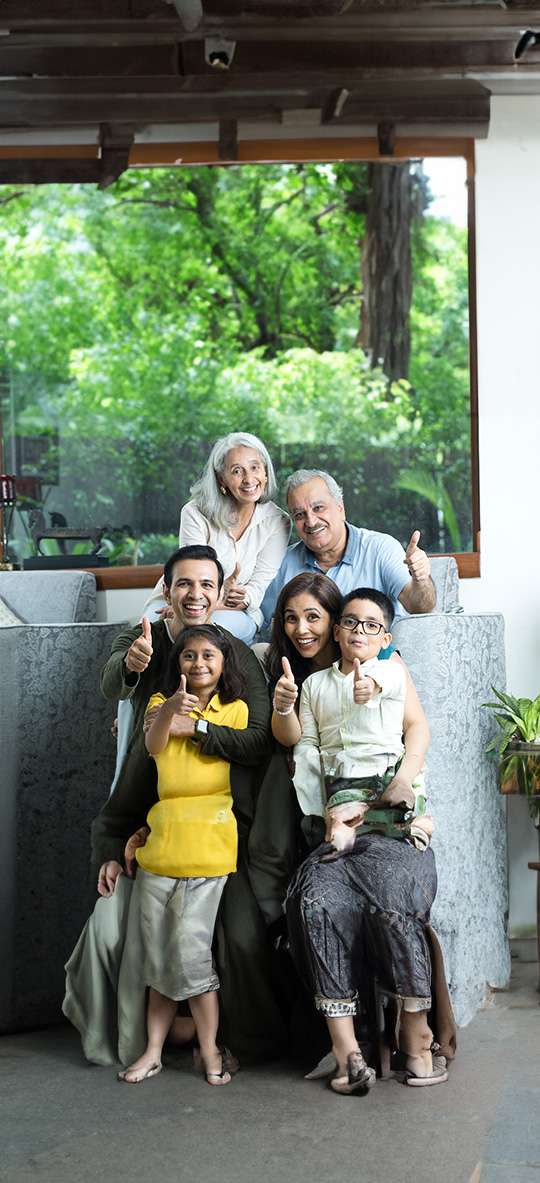8:00 a.m -6:00 p.m
-
-
-
RMZ Ecoworld, Bellandur, Outer Ring Road
8:00 a.m -6:00 p.m
RMZ Ecoworld, Bellandur, Outer Ring Road

Some people have childhoods and upbringings that equip them for life, not just financially or physically but emotionally too. These people grow up to be resilient strong and happy individuals.
Then something happens that throws them off course. With the help of friends and family they work through difficult times and return to leading fulfilling and happy lives. On other occasions friends and family are not enough and a little extra help is needed to bring them back on track. In such a case Attachment Focused Therapy can help to restore the balance.


In other cases however, it is hard to be happy at all. Attachment theory tell us that for those whose parents were unable to give them the childhood and upbringing that met their changing needs, for those whose parents found it difficult or impossible to attune to them, life is one where there is little emotional resilience.
People with low emotional resilience feel they shift from one crisis to another. They have relationships that cause them unhappiness and make them feel low. They feel life is really difficult and everything goes wrong for them. Their defence mechanisms, once vital for survival, are now additional problems that can make life almost too difficult to bear.
Our earliest relationships have an effect on the relationship we have with ourselves, the relationships we have with those who are important to us, the relationship we have with society and the wider world in which we live.
Attachment Focused Therapy in a safe environment gives the opportunity to begin to think about this relationship with self and with others. Therapy can help to gain an understanding of how we see our place in the world and why. Through a strong therapeutic alliance repair can begin.


Attachment is all about the bonding process we have as children with our caregiver(s).
For most of us, our primary caregivers were our parents. For some, their primary caregiver will be a grandparent or another family member, or will even be teachers or house masters for those who have been at boarding school throughout their childhoods. However, for most individuals the primary caregiver is a parent or parents in some form . . . either biological parents, step parents or adoptive parents.
As a child, our caregiver (s) were the centre of our world. Consequently, how our needs were met as children, how we were treated as we grew up and how our caregivers responded to our needs is internalised. This means we store those reactions inside of us.
This internalisation of how our caregiver responded to us, shapes the opinion we hold of ourselves and influences how we then attach to others in our adult lives.
It becomes our attachment ‘style’ or ‘pattern’.
There are different types of attachment styles and they affect how we feel about ourselves, how we relate to others, and how we relate to intimacy.
The types of attachment are as follows:
Secure: Having a Secure Attachment Style means being comfortable with both proximity and autonomy. These individuals are self-content, but they are also comfortable in relationships. Dating is also not an issue for the securely attached, as they tend to be open and straightforward. These people are warm and easy to connect to, and thus fancied by others. They feel comfortable approaching and bonding with potential partners.
Anxious or Preoccupied: Anxious attachment is one of the three insecure attachment styles. Referred to as anxious ambivalent attachment in children, anxious attachment develops in early childhood. Most often, anxious attachment is due to mis attuned and inconsistent parenting. Low self-esteem, strong fear of rejection or abandonment, and clinginess in relationships are common signs of this attachment style. Although it does require effort, individuals with such attachment issues can develop a secure attachment style over time.
Avoidant or Dismissive: The Dismissive or Avoidant Attachment Style is characterized by independence, assertiveness, and self-sufficiency. People with this attachment style have no problem being single. On the other hand, they might be very sociable, popular and friendly. Such individuals usually date many people, but lose interest as soon as a sexual partner tries to connect with them on a deeper, emotional level. They pursue what they want in a relationship, regardless of others’ needs.
Disorganised or Fearful Avoidant: The Disorganized Attachment Style, also referred to as Fearful Avoidant, is a contradictory attachment style that alternates between the Preoccupied and Dismissive styles. People with this attachment style want to be loved and connect with others. Initially, they present themselves as confident, attractive, and exciting, as if they have life all figured out. Yet, their fear of being hurt by someone they trust makes it difficult to bond and open up. Such individuals might have a hard time dating, since the process of getting to know and trust every potential partner might be painful, confusing, and distressing.

Supressing emotions.
Fear of intimacy.
Being inconsistent in relationships.
Emotional volatility.
Lack of boundaries.
Difficulty trusting others.
Fear of intimacy or co-dependency.
Low self-esteem.
The reason that the subject of attachment is relevant in therapy is that attachment is often at the heart of some of the issues and problems we experience as adults. Sometimes therapy will explore this indirectly. It may be that you come to therapy wanting to discuss and look at a situation, relationship or event that involves your parent (s) or caregiver. Sometimes attachment is something we end up exploring, not because you came to look at attachment directly, but because, during the therapy sessions, it is revealed to have links to what is going on in your life and the way in which you react or cope with one or several situations, events or relationships in your life, such as:
The way you react emotionally to certain situations
Your relationships
Your sense of confidence
Exploring your attachment can begin to set off ‘light bulb moments’, and can lead to an understanding and clarity around certain issues in your life, either past or present.

Attachment issues that are left unresolved can interfere with the ability to maintain relationships of any kind later in life. Those with attachment issues can often benefit from therapy as, in therapy they may be able to learn what healthy relationships look like, explore ways to form constructive bonds with caregivers, and develop ways to cope with the symptoms that resulted from their early attachment issues.
Adults who have never addressed problems with attachment and who see the result of attachment issues in their lives might, in treatment, identify and explore early losses, grieve for the childhood bonds that were not experienced, and gain closure, while learning how to develop healthy attachments and accept love, if they have difficulty doing so. Through therapy, adults who have experienced attachment issues may become able to build stronger bonds with friends, children, and partners.
By looking at attachments in therapy, you come to the realisation that by examining your childhood and past experiences you begin to understand the coping strategies that you formed early on in your life and how they now impact your relationships, reactions and how you feel about yourself in the present.
As a result, of your new understanding and awareness, you can begin to process your own experiences and in so doing come to understanding and clarity about why certain things in adulthood impact you so powerfully, or why something feels particularly difficult for you.
Discovering your early experiences means you can begin to view yourself differently and more positively and you can perhaps start to approach yourself with a kindness and compassion that you have not done before.